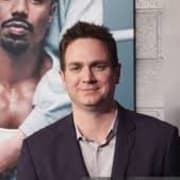The NBA's Return Plan Is Not Perfect But Perfect Was Never An Option
BOSTON – The NBA is back.
Great, right? Right?
On Thursday, the NBA’s Board of Governors approved the league’s plan to restart the season. In a 29-1 vote—Portland, somewhat bizarrely, was the only team to vote against—team owners signed off on the NBA’s plan to bring 22 teams to Orlando to complete the ’19-20 season.
The NBA players union will have a conference call with team representatives on Friday to discuss the league’s proposal. If approved, training camps will open on June 30 with the season resuming a month later.
Is it the right move?
We’re about to find out.
A 22-team return can be viewed as a compromise of sorts, a baby-splitting between the teams that wanted a 16-team, playoff field return and those that wanted to bring the entire league to Florida. Under the approved proposal, the 16-playoff teams get in, and the six teams within six games of the final playoff spot in each conference (Portland, Sacramento, New Orleans, San Antonio and Phoenix in the West; Washington in the East).
The playoff teams within shouting distance get a chance to compete. More than two-thirds of the league will get in enough regular season games to satisfy local television contracts. The NBA isn’t bringing back cellar-dwellers like Golden State or Cleveland to go through a month-long training camp to play in meaningless games.
It’s not perfect. But perfect was never on the table.
“Although we all know that there are much more meaningful and important issues for our country to focus on at this time, we are extremely grateful for the opportunity to play basketball again,” said Wizards GM Tommy Sheppard. “Our players and coaches have done a tremendous job of staying ready and active from a basketball perspective … there is still much work to be done, but we are excited to be able to return to the court and represent our DC Family.”
In a joint statement, Cavs GM Koby Altman and head coach J.B. Bickerstaff said, “While we are disappointed that the announced return to play proposal excludes the Cleveland Cavaliers, we understand all of the unprecedented factors that contributed to this outcome and we accept the hard decisions Commissioner Adam Silver and the NBA’s Board of Governors had to make. We also respect the exhaustive and life-altering measures that were considered as a result of COVID-19, but as a team, we greatly desired to be a part of the season’s resumption.”
Let the excitement wash over you—the NBA is back, baby—and then remember: The league is coming back with the COVID-19 pandemic still raging. The number of U.S. cases is nearing two million, per Johns Hopkins. More than 100,000 are dead. States have started to re-open but few, if any, have done so with strict adherence to CDC guidelines on how to safely re-open. Part of America have decided it’s time to get back to business. The NBA has, too.
The league will do everything possible to mitigate the risk. The Orlando bubble, er, campus will be heavily protected. Testing will be frequent. Social distancing protocols will be in place. Players will be allowed to bring a certain number of family members inside the quarantine, sources told SI.com, but movements are expected to be restricted. Players who test positive will be pulled. A full list of procedures is being ironed out, a source told SI.com, and will also require players approval.
But there is risk of widespread infection, and not an insignificant one. Florida’s coronavirus cases pushed past 60,000 this week. On Thursday, Florida’s Department of Health reported more than 1,400 new cases – the most confirmed cases reported in one day since March. In early July, the NBA will flood central Florida with hundreds of players, coaches and staffers, who will all interact with the hundreds needed to pull off an event like this. At least one infection is probable. A small outbreak is certainly possible. One of the NBA’s highest risk getting infected, like 71-year old Gregg Popovich or 69-year old Mike D’Antoni? That’s a nightmare scenario.
None of this is to say the NBA shouldn’t come back. No one, not even the foremost experts, can tell you definitively when it will be truly safe to play again. The NBA has access to testing, has the resources to create a bubble and, if the union approves the protocols, has players willing to assume a certain level of risk to get the NBA machine running again. They won’t cut corners. They will have some of the best doctors in the country on the ground.
And while any ‘the world needs sports’ argument is goofy—the NBA, like the NHL and every other sports entity are coming back for the money—this postseason could be fun. Trying to handicap the field right now is pointless. We have no idea what players are in shape. We have no idea how many players skills are sharp. We may not know until the playoffs begin exactly who the real favorite is. And while an empty stadium will offer strange optics, television viewers will likely see (and hear) a side of the game they never have before.
The NBA just needs to be careful. Thursday’s vote was a watershed moment. But the hard work has just begun.
